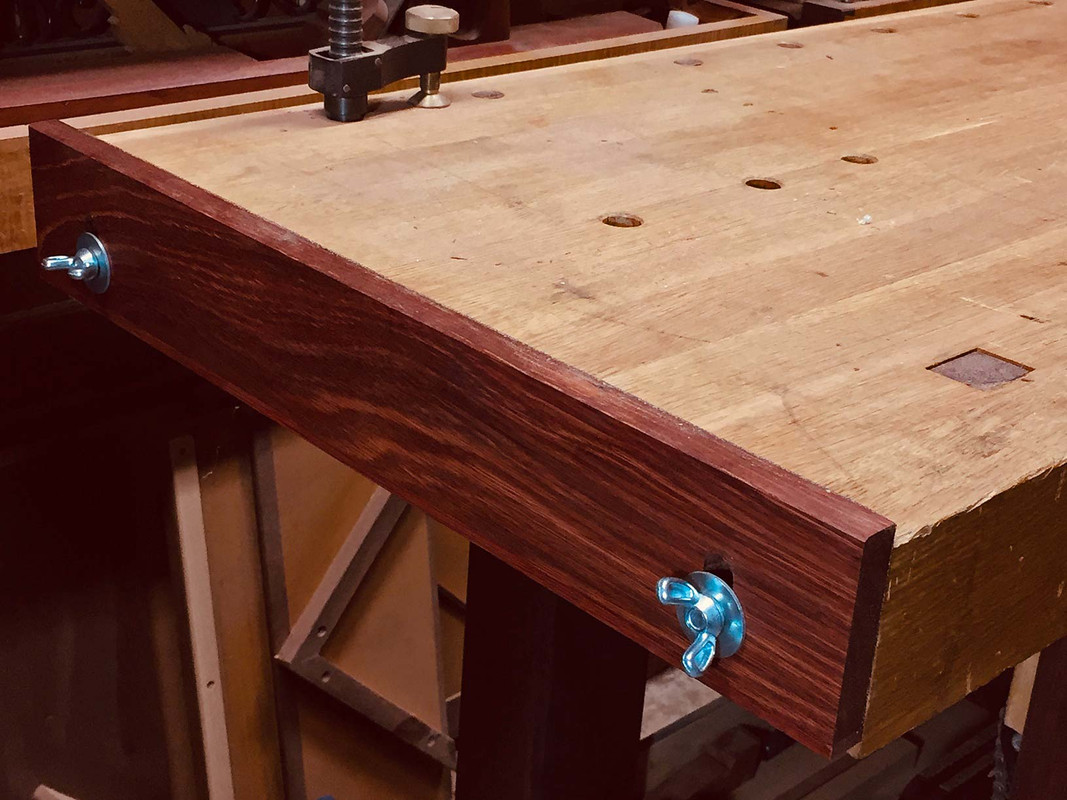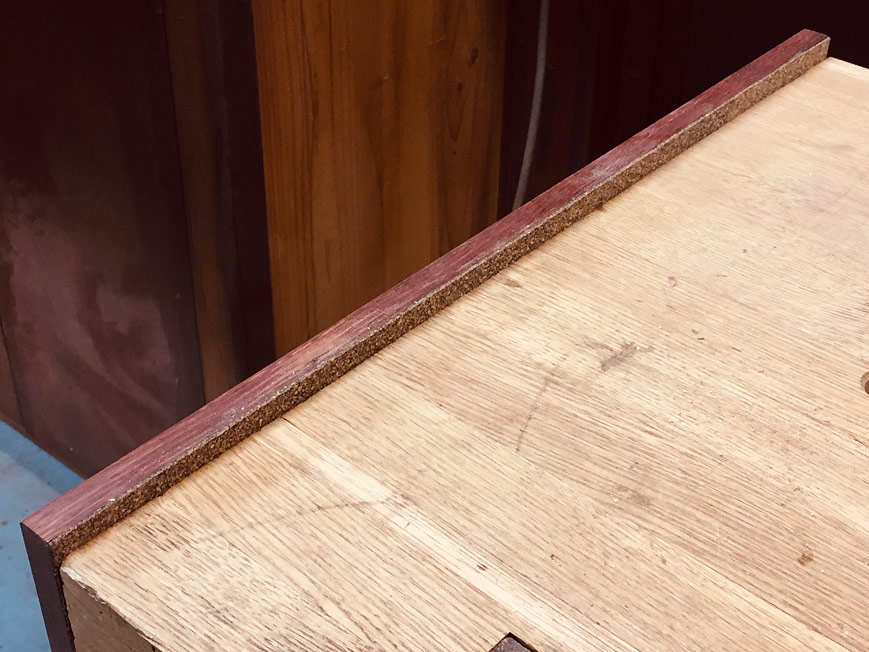I'm currently making a bench inspired by the old "Sloyd" style school benches, as below:
sloyd-workbench.jpg
Mine, however, is only 3 feet long, as opposed to the more standard 4 foot versions. This means that my front vise, rather than being to the left of the leg assembly, is on the right of it, because I chose to make the base as long as possible.
I left only about 6cm -- about 2 & 3/8" -- on the left side of the leg supports, which are permanently attached to the underside of the bench.
This space is all that I have to place a planing stop, if I decide to do that. If I go with something like a 1" x 1" planing stop, or maybe a little wider... 1" x 1.25" or something... That would lead me with just 35cm, or 1 3/8" of material before the end of the bench, which is just exposed endgrain.
Would this be too fragile and likely to blow out or crack? Or, should I even care, given that I could presumably just glue any blown out piece back into place?




 Reply With Quote
Reply With Quote


















